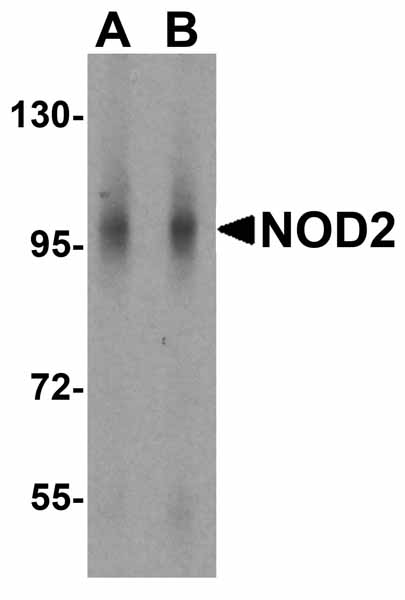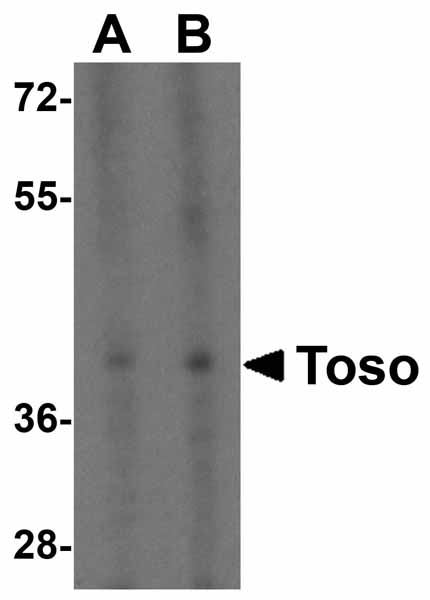RPSA Antibody
- SPECIFICATION
- CITATIONS
- PROTOCOLS
- BACKGROUND

Application
| WB, IHC-P, IF, E |
|---|---|
| Primary Accession | P08865 |
| Other Accession | NP_002286, 3921 |
| Reactivity | Human, Mouse |
| Host | Rabbit |
| Clonality | Polyclonal |
| Isotype | IgG |
| Calculated MW | Predicted: 32 kDa Observed: 38 kDa |
| Application Notes | RPSA antibody can be used for detection of RPSA by Western blot at 1 - 2 μg/ml. Antibody can also be used for Immunohistochemistry starting at 5 μg/mL. For immunofluorescence start at 20 μg/mL. |
| Gene ID | 3921 |
|---|---|
| Target/Specificity | RPSA antibody was raised against a 17 amino acid peptide near the carboxy terminus of human RPSA. The immunogen is located within amino acids 190 - 240 of RPSA. |
| Reconstitution & Storage | RPSA antibody can be stored at 4℃ for three months and -20℃, stable for up to one year. |
| Precautions | RPSA Antibody is for research use only and not for use in diagnostic or therapeutic procedures. |
| Name | RPSA {ECO:0000255|HAMAP-Rule:MF_03016} |
|---|---|
| Synonyms | LAMBR, LAMR1 |
| Function | Required for the assembly and/or stability of the 40S ribosomal subunit. Required for the processing of the 20S rRNA- precursor to mature 18S rRNA in a late step of the maturation of 40S ribosomal subunits. Also functions as a cell surface receptor for laminin. Plays a role in cell adhesion to the basement membrane and in the consequent activation of signaling transduction pathways. May play a role in cell fate determination and tissue morphogenesis. Acts as a PPP1R16B-dependent substrate of PPP1CA. |
| Cellular Location | Cell membrane. Cytoplasm. Nucleus {ECO:0000255|HAMAP-Rule:MF_03016}. Note=67LR is found at the surface of the plasma membrane, with its C-terminal laminin-binding domain accessible to extracellular ligands. 37LRP is found at the cell surface, in the cytoplasm and in the nucleus (By similarity) Colocalizes with PPP1R16B in the cell membrane. {ECO:0000255|HAMAP- Rule:MF_03016} |

Thousands of laboratories across the world have published research that depended on the performance of antibodies from Abcepta to advance their research. Check out links to articles that cite our products in major peer-reviewed journals, organized by research category.
info@abcepta.com, and receive a free "I Love Antibodies" mug.
Provided below are standard protocols that you may find useful for product applications.
Background
The 40S ribosomal protein SA (RPSA) is a high-affinity, non-integrin family, laminin receptor, also known as 67 kDa laminin receptor or 37 kDa laminin receptor precursor (37LRP) (1). Laminins, a family of extracellular matrix glycoproteins, are the major noncollagenous constituent of basement membranes and have been implicated in a variety of biological processes including cell adhesion, differentiation, migration, signaling, neurite outgrowth and metastasis (2). RPSA is overexpressed in multiple types of cancers and has recently been shown to act as a cancer-specific death receptor (3).
References
Jackers P, Minoletti F, Belotti D, et al. Isolation from a multigene family of the active human gene of the metastasis-associated 67kDa laminin binding protein 37LRP/p40 at chromosome 3p21.3. Oncogene 1996; 13:495-503.
Savino W and Silva-Barbosa SD. Laminin/VLA-6 interactions and T cell function. Braz. J. Med. Biol. Res. 1996; 29:1209-20.
Kumazoe M, Sugihara K, Tsukamoto S, et al. 67-kDa laminin receptor increases cGMP to induce cancer-selective apoptosis. J. Clin. Invest. 2013; 123:787-99.
If you have used an Abcepta product and would like to share how it has performed, please click on the "Submit Review" button and provide the requested information. Our staff will examine and post your review and contact you if needed.
If you have any additional inquiries please email technical services at tech@abcepta.com.













 Foundational characteristics of cancer include proliferation, angiogenesis, migration, evasion of apoptosis, and cellular immortality. Find key markers for these cellular processes and antibodies to detect them.
Foundational characteristics of cancer include proliferation, angiogenesis, migration, evasion of apoptosis, and cellular immortality. Find key markers for these cellular processes and antibodies to detect them. The SUMOplot™ Analysis Program predicts and scores sumoylation sites in your protein. SUMOylation is a post-translational modification involved in various cellular processes, such as nuclear-cytosolic transport, transcriptional regulation, apoptosis, protein stability, response to stress, and progression through the cell cycle.
The SUMOplot™ Analysis Program predicts and scores sumoylation sites in your protein. SUMOylation is a post-translational modification involved in various cellular processes, such as nuclear-cytosolic transport, transcriptional regulation, apoptosis, protein stability, response to stress, and progression through the cell cycle. The Autophagy Receptor Motif Plotter predicts and scores autophagy receptor binding sites in your protein. Identifying proteins connected to this pathway is critical to understanding the role of autophagy in physiological as well as pathological processes such as development, differentiation, neurodegenerative diseases, stress, infection, and cancer.
The Autophagy Receptor Motif Plotter predicts and scores autophagy receptor binding sites in your protein. Identifying proteins connected to this pathway is critical to understanding the role of autophagy in physiological as well as pathological processes such as development, differentiation, neurodegenerative diseases, stress, infection, and cancer.



